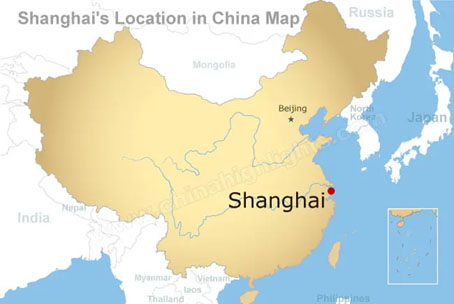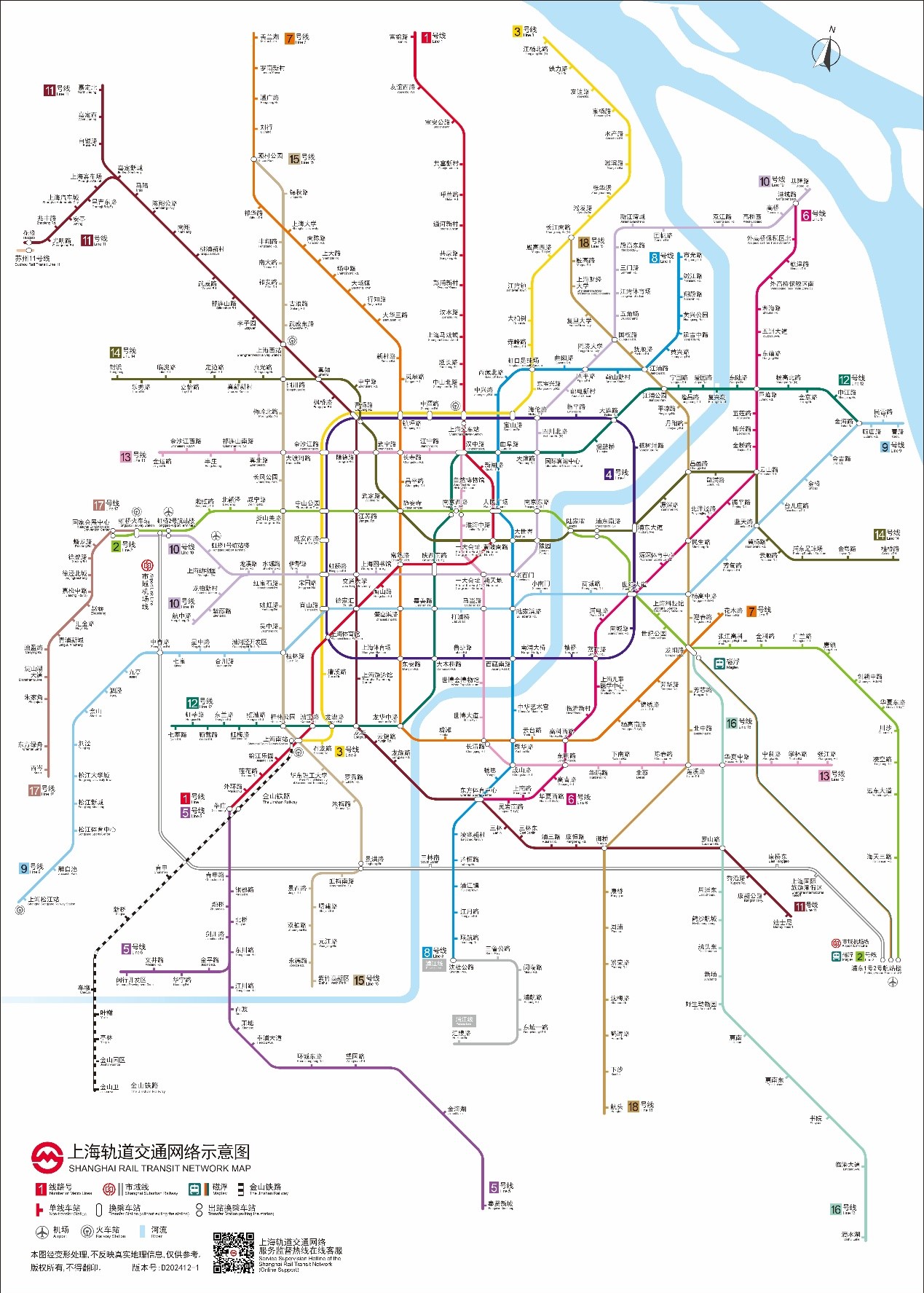▶ General Information
Geography
Located at the estuary of the Yangtze River in East China and facing the Pacific Ocean, Shanghai forms part of the Yangtze River Delta, one of China's most robust, open and innovative regions (Left Figure). Shanghai municipality is bordered by Jiangsu province to the north and west and Zhejiang province to the southwest.

Shanghai Municipality covers an area of 6,340 sq km (2,500 sq mi) (Above Right Figure). It includes the 18 districts constituting the city of Shanghai and several islands in the mouth of the Yangtze and offshore to the southeast in the East China Sea. The city is divided into two parts by the Huangpu River: Puxi (west of the Huangpu River) and Pudong (east of the Huangpu River). Puxi is the older part of the city and hosts the majority of shops, restaurants and museums. Pudong is the modern part, and is recognized for its rather unusual yet extremely impressive high-rises such as Shanghai's tallest buildings, the Shanghai International Financial Center, Jinmao Building and the Oriental Pearl TV Tower.
Population
Due to constant inflow of people from other parts of the country, the size of population in Shanghai keeps growing. Before Shanghai was liberated in 1949, it only had a population of 5.2 million. According to official figures, around 24.87 million permanent residents were living in the administrative area of Shanghai municipality in 2023.Climate
The city’s maritime location fosters a mild climate characterized by minimal seasonal contrast. The average annual temperature is about 61 °F (16 °C); the July maximum averages about 80 °F (27 °C), and the average January minimum is about 37 °F (3 °C). About 45 inches (1,140 mm) of precipitation fall annually, with the heaviest rainfall in June and the lightest in December.Economy
Shanghai has been described as the "showpiece" of the booming economy of China. The city is a global center for finance and innovation, and a national center for commerce, trade, and transportation, with the world's busiest container port, the Port of Shanghai. According to Julius Baer's Global Wealth and Lifestyle Report, Shanghai was the most expensive city in the world for living a luxurious lifestyle in 2021. Shanghai was the 5th wealthiest city in the world, with a total wealth of $1.8 trillion, and Shanghai was ranked fifth-highest in the number of billionaires by Forbes. Shanghai's nominal GDP was projected to reach US$1.3 trillion in 2035 (ranking first in China), making it one of the world's top 5 major cities in terms of GRP according to a study by Oxford Economics. As of August 2024, Shanghai ranked 4th in the world and 2nd in China (after Beijing) in terms of the number of Fortune Global 500 companies there.Culture
The culture of Shanghai was formed by a combination of the nearby Wuyue culture and the "East Meets West" Haipai culture. Wuyue culture's influence is manifested in Shanghainese language—which comprises dialectal elements from nearby Jiaxing, Suzhou, and Ningbo—and Shanghai cuisine, which was influenced by Jiangsu cuisine and Zhejiang cuisine. Haipai culture emerged after Shanghai became a prosperous port in the early 20th century, with numerous foreigners from Europe, America, Japan, and India moving into the city. The culture fuses elements of Western cultures with the local Wuyue culture, and its influence extends to the city's literature, fashion, architecture, music, and cuisine. The term Haipai—originally referring to a painting school in Shanghai—was coined by a group of Beijing writers in 1920 to criticize some Shanghai scholars for admiring capitalism and Western culture. In the early 21st century, Shanghai has been recognized as a new influence and inspiration for cyberpunk culture, particularly noted for its futuristic skyline and vibrant urban landscape.Transportation
Shanghai has an extensive public transportation system comprising metros, buses, ferries, and taxis, all of which can be used with a Shanghai Public Transport Card.Metro System: Shanghai's rapid transit system, the Shanghai Metro, incorporates both subway and light metro lines and extends to every core urban district as well as neighboring suburban districts. As of 2025, there are 21 metro lines (excluding the Shanghai maglev train and Jinshan railway), 515 stations, and 803 km (499 mi) of lines in operation, making it the longest metro network in the world.
Shanghai's Metro Network Map

Bus Network: Shanghai also has the world's most extensive bus network, including the world's oldest continuously operating trolleybus system, with 1,575 lines covering a total length of 8,997 km (5,590 mi) in 2019.
Taxi: As of 2025, about 50,000 taxis were in operation in Shanghai.
Railways: Shanghai has four major railway stations: Shanghai railway station, Shanghai South railway station, Shanghai West railway station, and Shanghai Hongqiao railway station. All are connected to the metro network and serve as hubs in the railway network of China. The city's extensive rail transit network comprises approximately twenty lines, significantly facilitating daily commutes.
Air and Sea: Shanghai is one of the largest air transportation hubs in Asia. The city has two commercial airports: Shanghai Pudong International Airport and Shanghai Hongqiao International Airport. Pudong International Airport is the primary international airport, while Hongqiao International Airport mainly operates domestic flights with limited short-haul international flights. Since its opening, the Port of Shanghai has rapidly grown to become the largest port in China. Overtaking the Port of Singapore in 2010, the Port of Shanghai has become the world's busiest container port with an annual container throughput of 42 million TEUs in 2018. Besides cargo, the Port of Shanghai handled 259 cruises and 1.89 million passengers in 2019.
